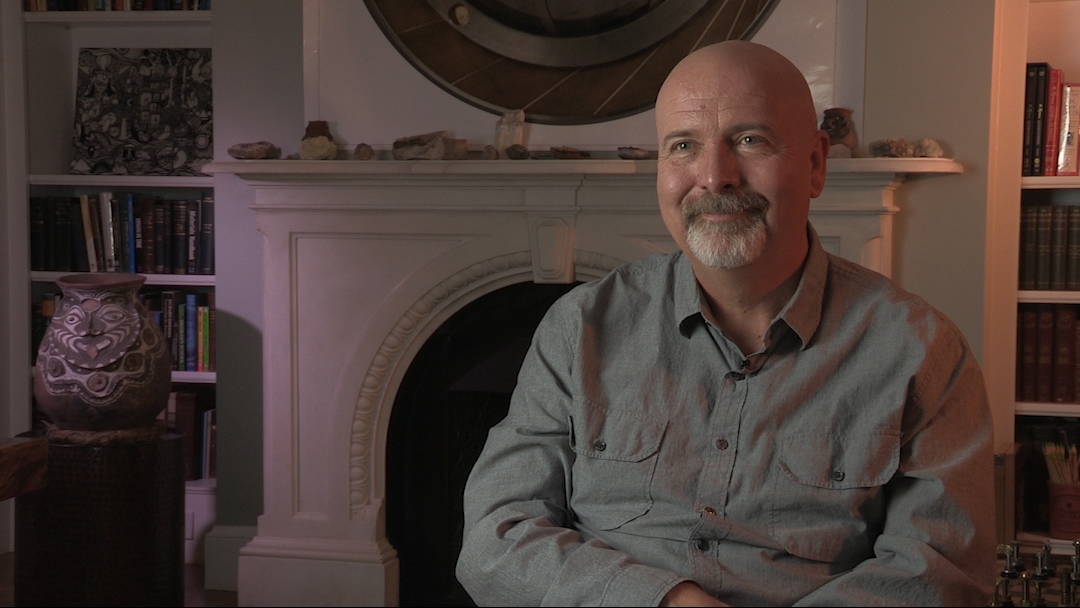NEXT STORY

Why I worry about drone warfare
RELATED STORIES

NEXT STORY

Why I worry about drone warfare
RELATED STORIES


|
Views | Duration | |
|---|---|---|---|
| 221. My life list: An amphicar | 63 | 03:27 | |
| 222. My amphibious car versus the presidential helicopter | 54 | 04:30 | |
| 223. Building BSSTO – Boosted Single Stage to Orbit | 63 | 03:45 | |
| 224. The most fun rocket launch | 62 | 04:56 | |
| 225. The first vertical rocket landing | 59 | 01:56 | |
| 226. Why I worry about drone warfare | 64 | 01:16 | |
| 227. My children – little builders | 61 | 01:24 | |
| 228. The boys' immunity to pain | 63 | 01:03 | |
| 229. My daughter – a perfectionist | 66 | 02:45 | |
| 230. A successful second date with Taylor | 93 | 04:45 |


But I remember how exciting it was, that first vertical landing, because we really didn't know it was going to work.
[Q] That was before drones?
No, I'm talking about the first rocket vertical landing, and the first recovered rocket. That was extraordinary, because the previous one had blown up, basically. Not... and so we really weren't sure if it was going to work and we didn't have a spare if it didn't. And we really would have set things way back if it hadn't worked. And we understood the reason the previous one had gone wrong. I mean, you just learn by practice on these things. But I remember that first landing, because it came down and it did this little kind of... as it landed, it was programmed to land not just on the landing pad, but in the exact centre of the landing pad. So it came back down at supersonic velocity and you heard this boom, which was delayed. So you heard the boom just as the puff of smoke went up from just blowing up the smoke from the desert. And so what we saw was it came down – it comes down very fast – and then, just as it's coming down, it did this kind of little Marilyn Monroe scootch as it... and then the clouds went up, because it blew up so much dust. We couldn't see what had happened. And then we heard this boom, which had nothing to do with the landing. That was just the sonic boom of it coming in. And then the dust cleared and there it was sitting, like, right on the centre of the launch pad in perfect shape. That was a great moment.
W Daniel Hillis (b. 1956) is an American inventor, scientist, author and engineer. While doing his doctoral work at MIT under artificial intelligence pioneer, Marvin Minsky, he invented the concept of parallel computers, that is now the basis for most supercomputers. He also co-founded the famous parallel computing company, Thinking Machines, in 1983 which marked a new era in computing. In 1996, Hillis left MIT for California, where he spent time leading Disney’s Imagineers. He developed new technologies and business strategies for Disney's theme parks, television, motion pictures, Internet and consumer product businesses. More recently, Hillis co-founded an engineering and design company, Applied Minds, and several start-ups, among them Applied Proteomics in San Diego, MetaWeb Technologies (acquired by Google) in San Francisco, and his current passion, Applied Invention in Cambridge, MA, which 'partners with clients to create innovative products and services'. He holds over 100 US patents, covering parallel computers, disk arrays, forgery prevention methods, and various electronic and mechanical devices (including a 10,000-year mechanical clock), and has recently moved into working on problems in medicine. In recognition of his work Hillis has won many awards, including the Dan David Prize.
Title: The first vertical rocket landing
Listeners: Christopher Sykes George Dyson
Christopher Sykes is an independent documentary producer who has made a number of films about science and scientists for BBC TV, Channel Four, and PBS.
Tags: Marilyn Monroe
Duration: 1 minute, 56 seconds
Date story recorded: October 2016
Date story went live: 05 July 2017